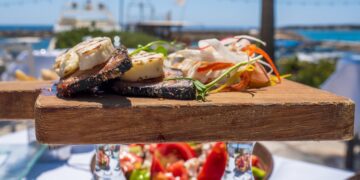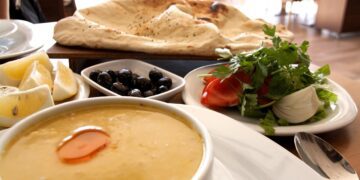Jamón Ibérico, often considered Spain’s most prized culinary treasure, has a rich and fascinating history that stretches back centuries. Renowned for its exceptional flavour and texture, this cured ham has become an iconic part of Spanish culture, especially in Madrid. Whether you’re a food lover or a history enthusiast, understanding the journey of Jamón Ibérico reveals why it remains Madrid’s favourite ham and a celebrated staple across the world.
The Ancient Origins of Jamón Ibérico
The roots of Jamón Ibérico trace back to the Iberian Peninsula, where ancient civilisations like the Celts and Romans first began curing pork to preserve it. Early forms of ham were salt-cured, a technique that evolved over centuries to create the exquisite, refined product we know today.
The Iberian pig, unique to the peninsula, plays a pivotal role in the flavour of Jamón Ibérico. These pigs thrive in Spain’s dehesas, vast Mediterranean oak forests, where they roam freely and feed on acorns. This natural diet contributes to the ham’s distinct, nutty flavour and rich texture. The highest-quality Jamón Ibérico, known as “pata negra” (black hoof), is made from these acorn-fed pigs, a true symbol of Spanish gastronomic excellence.
The Evolution of Jamón in Medieval Spain
By the Middle Ages, the popularity of cured pork products spread across Spain, especially around Madrid. The cooler, dry climate of Madrid’s surrounding mountains proved perfect for drying and curing ham, allowing Jamón Ibérico to thrive. As the practice of dry-curing ham progressed, distinct regional methods of preparation emerged, some of which continue to this day.
Religion and social changes played a role in the consumption of pork. After the Reconquista, pork, including Jamón Ibérico, became a symbol of Christian identity in a Spain recovering from centuries of Moorish influence.
Jamón Ibérico in Modern Spanish Culture
By the 20th century, Jamón Ibérico had firmly established itself as a luxury product, particularly in Madrid. Though Jamón Serrano (Serrano ham) is more widely available, Jamón Ibérico is regarded as the crème de la crème of Spanish hams. The 1980s and 1990s saw the introduction of strict regulations to preserve the quality of Jamón Ibérico, with the Denomination of Origin (DO) system being put in place to protect specific production regions and methods.
Jamón Ibérico de Bellota, the acorn-fed variety, is now a highly prized delicacy, recognised for its exceptional flavour. Regions like Guijuelo, Extremadura, and Jabugo are famous for producing some of the best Jamón Ibérico in the world.
The Role of Jamón Ibérico in Madrid’s Gastronomy
Madrid is the epicentre of Jamón Ibérico appreciation in Spain. The city boasts countless tapas bars, restaurants, and markets offering this delicacy. One notable place to sample the finest Jamón Ibérico is the famous Mercado de San Miguel, where visitors can enjoy thinly sliced ham served with a variety of Spanish wines.
Madrid also hosts specialised Jamón Ibérico tasting experiences. These expert-led sessions teach you about the differences between Jamón Ibérico de Bellota and Jamón Ibérico Cebo (grain-fed ham). You’ll also learn the traditional art of corte de jamón, or ham slicing, which enhances the enjoyment of this remarkable food.
How to Enjoy Jamón Ibérico in Madrid
Jamón Ibérico pairs beautifully with a variety of Spanish foods and drinks, making it a must-try when in Madrid. One classic pairing is Jamón Ibérico with queso manchego, another regional delicacy from La Mancha. It’s also commonly enjoyed with pan con tomate, a simple yet flavourful dish made of bread rubbed with ripe tomatoes, olive oil, and a sprinkle of sea salt.
For a complete Madrid experience, enjoy Jamón Ibérico alongside a glass of Spanish red wine, such as Rioja or Ribera del Duero. The rich, salty flavour of the ham complements the bold tannins of these wines, making for a memorable pairing.
The Global Popularity of Jamón Ibérico
While Jamón Ibérico is deeply rooted in Spanish culture, its popularity has soared globally. Today, it’s considered one of the finest cured meats available and is celebrated in restaurants worldwide. Madrid, as a global city, plays a central role in promoting Jamón Ibérico, exporting it to various corners of the world.
As more people discover the distinctive flavours and cultural significance of Jamón Ibérico, its reputation continues to grow. Whether served in Michelin-starred restaurants or local tapas bars, Jamón Ibérico remains a symbol of Spain’s gastronomic heritage.
A Taste of Spain’s Rich Culinary Tradition
The history of Jamón Ibérico is a story of craftsmanship, tradition, and cultural pride. From its ancient origins on the Iberian Peninsula to its present-day status as a global culinary treasure, Jamón Ibérico has become a symbol of Spain’s rich food culture. In Madrid, this iconic ham is more than just a meal; it’s a celebration of Spain’s history, its passion for quality food, and the enduring culinary traditions that continue to shape the country today.
Next time you visit Madrid, make sure to indulge in Jamón Ibérico—not just for its flavour, but to savour a piece of Spanish history and culture.














